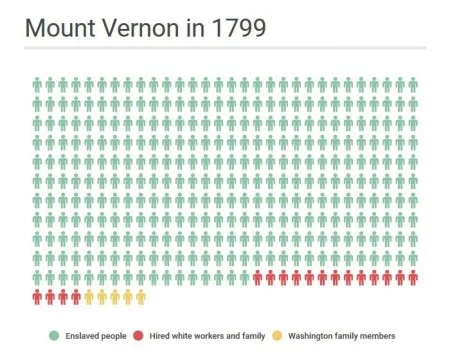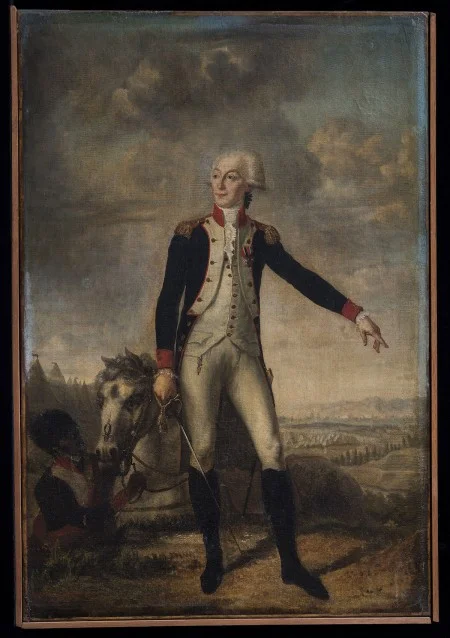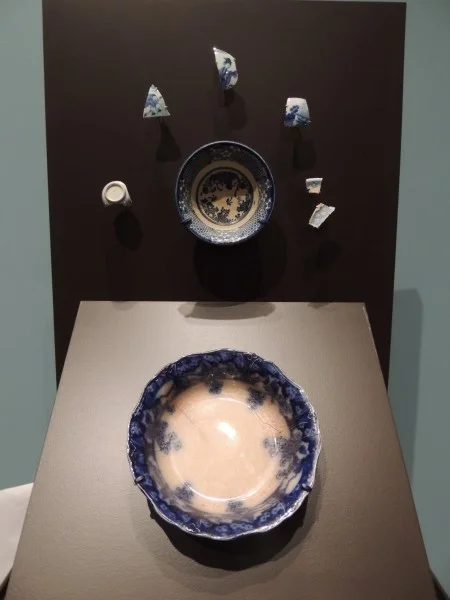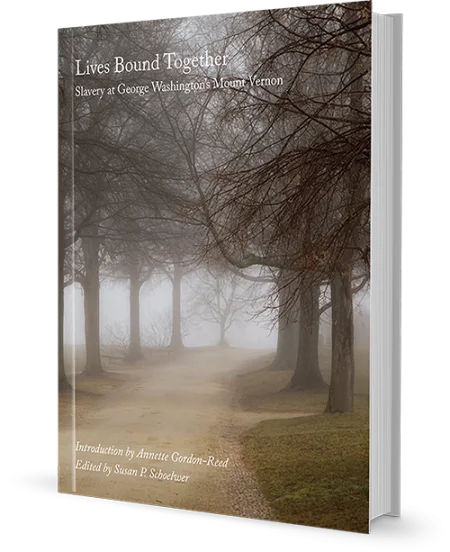About the Exhibition
Through household furnishings, art works, archaeological discoveries, documents, and interactive displays, the exhibition, which spans 4,400 square feet throughout all seven galleries of the Donald W. Reynolds Museum, demonstrates how closely intertwined the lives of the Washingtons were with those of the enslaved. Nineteen enslaved individuals are featured throughout the exhibit, represented with life-size silhouettes and interactive touchscreens providing biographical details.
More than 350 items are on view—seeds and animal bones, ceramic fragments and metal buttons unearthed from archaeological excavations around the estate, as well as fine tablewares and furniture from the Washington household, providing insights into the enslaved community’s daily lives and work.
Guests gain a better understanding of Washington’s changing views towards slavery, culminating in his landmark decision to include in his will a provision freeing the slaves that he owned. Visitors will have an opportunity to view original manuscript pages from George Washington’s will, written in July 1799, showing his decision to free the slaves he owned.
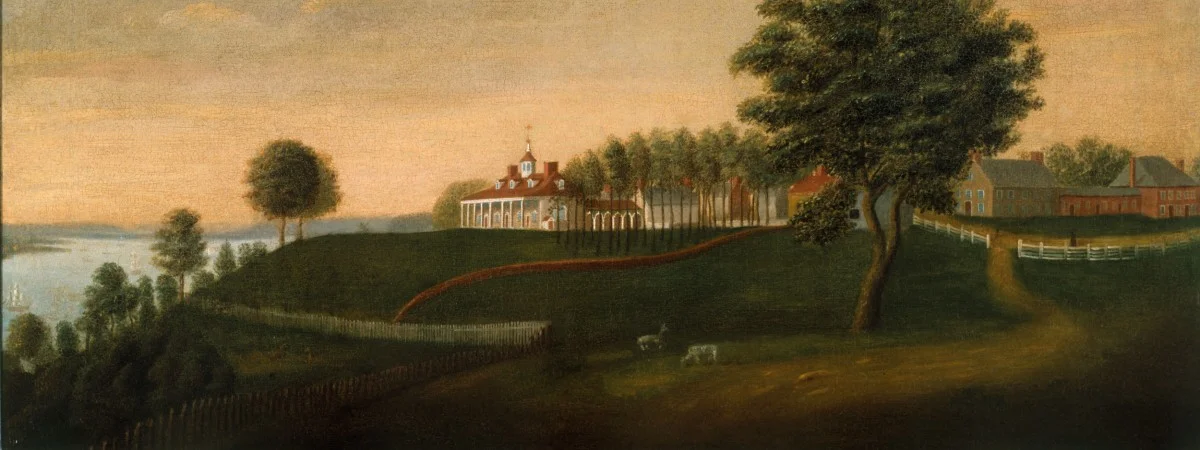
“The unfortunate condition of the persons whose labour in part I employed, has been the only unavoidable subject of regret.”
- George Washington, ca. 1787–1788
Personal Lives of Enslaved People
The exhibition profiles 19 individuals enslaved at Mount Vernon, using George Washington’s extensive records to piece together what is known of their lives in interactive displays.
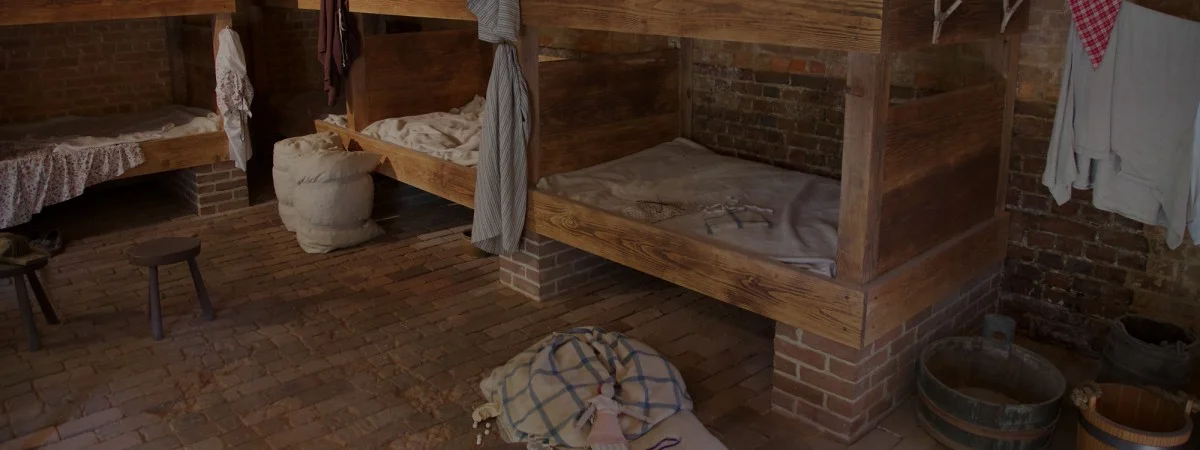
“Life is a burden to a slave person, indeed it is—left without education and the mind terrified all the time.”
- Edmund Parker, enslaved at Mount Vernon under John Augustine Washington III (1841–1861), free employee of the Mount Vernon Ladies’ Association (1874–1879, 1882–1898), 1898
Slavery at Mount Vernon
Mount Vernon was George Washington’s home. It was also home to hundreds of enslaved people who lived and worked under Washington’s control. In 1799, there were 317 men, women, and children enslaved at Mount Vernon’s five farms, which covered 8,000 acres. They made up more than 90% of the population of the estate.
Highlights from the Exhibit
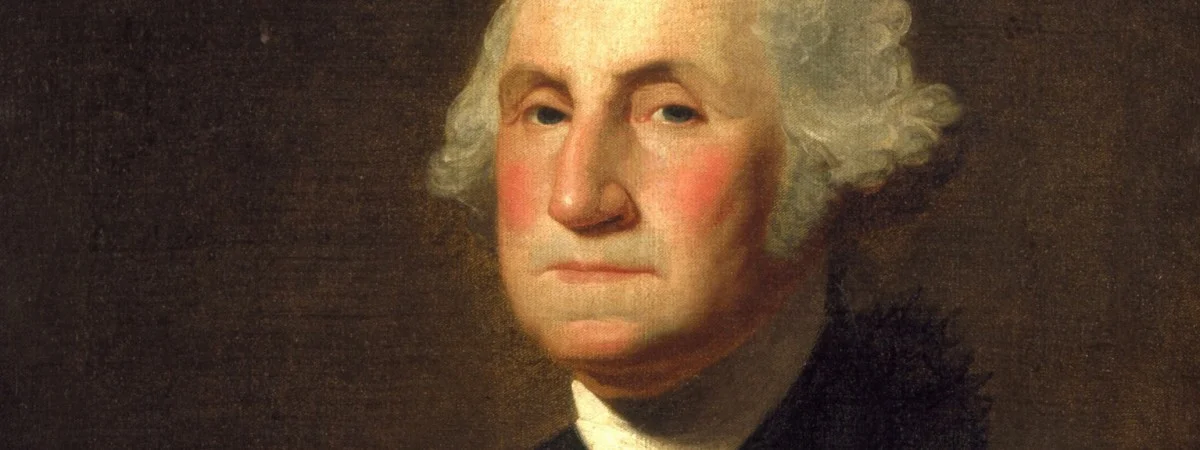
“Upon the decease of my wife, it is my Will and desire that all the Slaves which I hold in my own right, shall receive their freedom.”
- George Washington’s Last Will and Testament, July 9, 1799
George Washington’s Evolving Views on Slavery
George Washington was born into a world where slavery was common. At age 11, he inherited 10 enslaved people from his father. He would go on to inherit, purchase, rent, and gain control of more than 500 enslaved people at Mount Vernon and his other properties by the end of his life.
Washington’s views on slavery changed over time. Economic and moral concerns led him to question slavery after the Revolutionary War, though he never lobbied publicly for abolition. Unable to extricate himself from slavery during his lifetime, Washington chose to free the 123 enslaved people he owned outright in his will. He was the only founding father to do so.
The Documentary Record
Most enslaved people never had an opportunity to learn reading or writing, so they left few written records of their own. By contrast, George Washington wrote a vast number of letters and kept meticulous records of his plantation.
These documents illuminate his own changing views on slavery. They also contain valuable details about the lives of those in bondage on his estate—information that might otherwise be lost forever.
Learn More about Researching Slavery
George Washington composed this list in July 1799, noting the names, ages, and skills of the people he rented from his neighbor, Mrs. Penelope French.

In addition to many of Washington’s letters and lists, the exhibition also includes documents like the Inspection Roll of Negroes, a ledger documenting enslaved people who ran away to freedom with the British during the Revolutionary War. The roll includes an entry for Harry Washington, “[formerly the property] of General Washington,” who escaped from Mount Vernon in 1776.
Explore the full Inspection Roll of Negroes in the National Archives Catalog online: Volume 1 and Volume 2.


The exhibition also features Senate bill version of the Fugitive Slave Act, which Washington signed into law in 1793, one of two pieces of legislation relating to slavery that he signed while in office.

The Fugitive Slave Act and the Inspection Roll of Negroes appear courtesy of the National Archives, Washington, DC.
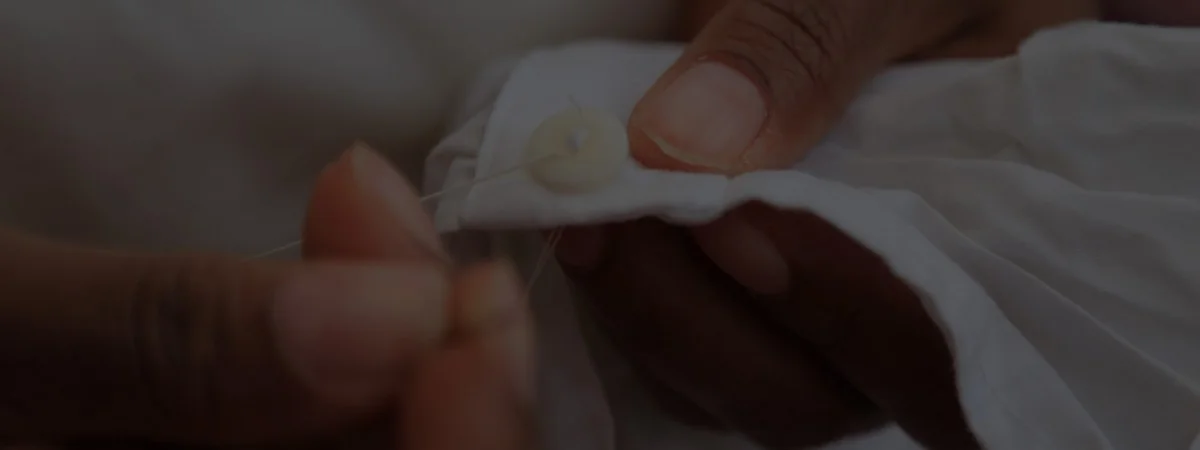
“…I am free, and have, I trust been made a child of God by the means.”
- Ona Judge Staines, Martha Washington’s enslaved lady’s maid, 1845
Descendants of the Enslaved Community

Loretta Carter Hanes, 1926-2016.
Family heirlooms and oral histories from descendants of those enslaved at Mount Vernon are valuable resources in piecing together the lives those enslaved at Mount Vernon in the 18th century.
These bowls were passed down in the family of Loretta Carter Hanes, a descendant of Suckey Bay and her daughter Rose Carter—both enslaved field workers at Mount Vernon’s River Farm who were emancipated by George Washington’s will. Family members have long used blue-and-white tableware, a tradition they trace to their ancestors at Mount Vernon. Although these bowls date to the 19th century, many fragments of blue-and-white ceramics have been unearthed in an archaeological excavation of an 18th-century Mount Vernon slave quarter.
Courtesy of Loretta Carter Hanes and Peter Hanes
Washington and Slavery
Learn more about George Washington and the enslaved population at Mount Vernon.
Learn moreExhibit Catalog
Edited by Susan P. Schoelwer, Senior Curator at George Washington's Mount Vernon, with introduction by Annette Gordon-Reed of Harvard University.
Lives Bound Together provides fresh research on this important topic, with brief biographies of 19 enslaved individuals, 10 essays, and 130 illustrations (including paintings, prints, and household furnishings from the Mansion, artifacts excavated by archaeologists from the slave quarters, documents, maps, and conjectural silhouettes that suggest the presence of the enslaved).
The text illuminates the lives, families, and experiences of the enslaved people of Mount Vernon as well as Washington's own evolving views on slavery, culminating in his pioneering action to free his slaves per the terms of his will. A Mount Vernon bookplate, signed by the author, is included with your purchase.

![The Washington Family / La Famille de Washington by Edward Savage in 1798. [W-5298]](https://mtv-main-assets.mountvernon.org/files/styles/text_image_block/s3/callout/text-image-block-special-exhbiit/image/sml_di_1942-1_w-5298.jpg.webp?VersionId=2TBrBqZeQ8uL7VJl3Lgg0U2IfYy9oAwV&itok=efFgyH5r)
















